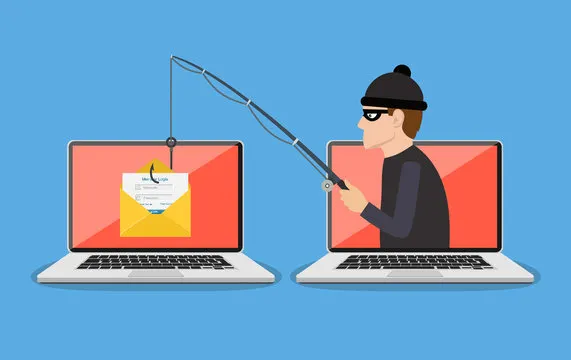
Phishing as a Service (PhaaS): The Rising Threat Behind Ransomware and Cyber Attack
PHISHING AS A SERVICE
INTRODUCTION
Phishing as a Service (PhaaS) is a cybercrime model where threat actors sell or lease pre-built phishing tools, infrastructure, and services to other attackers, enabling them to launch phishing campaigns with minimal effort or technical knowledge. Similar to the Software as a Service (SaaS) model, PhaaS provides subscription-based access to ready-made phishing kits, email spoofing tools, credential harvesting mechanisms, and automation features, making phishing attacks more accessible to cybercriminals.
How Phishing as a Service (PhaaS) Works
1.Pre-built phishing kits: Attackers get access to templates mimicking legitimate websites like Microsoft 365, PayPal, or Google.
2.Automated attack infrastructure: The service handles email delivery, domain generation, and bypassing security filters.
3.Credential harvesting & data exfiltration: Stolen usernames and passwords are either rent to the buyer or stored in an attacker-controlled dashboard.
4.Subscription-based pricing: PhaaS platforms often follow a monthly or pay-per-phish model, similar to SaaS solutions.
Why PhaaS is a Growing Threat
PhaaS has lowered the barrier to entry for cybercriminals, allowing even unskilled individuals to conduct sophisticated phishing attacks. This has led to a surge in business email compromise (BEC), ransomware infections, and credential theft. Organizations must enhance their email security, implement multi-factor authentication (MFA), and conduct regular employee training to mitigate these threats.
Common PhaaS Features
Ready-made phishing templates (Google, Microsoft, PayPal, etc.).
Email spoofing and evasion techniques.
Automated credential validation.
Dashboard analytics for tracking victims.
Case Studies & Real-World Attacks
How organizations have been compromised due to PhaaS-based attacks
"The Lucid Phishing-as-a-Service (PhAAS) platform, developed by the XinXin group, facilitates large-scale phishing campaigns targeting global organizations, including postal and courier services. Utilizing advanced technologies like RCS and iMessage, the group employs automated tools and evasion techniques to bypass detection. Key actors, such as LARVA-242, manage operations through a structured hierarchy, while monetizing stolen data. Lucid’s technical sophistication and global reach highlight the growing threat of PhAAS platforms".
DETECTING & PREVENTING PHaaS ATTACK
Technical Detection Techniques
Identifying phishing emails (headers, domains, URLs).
Sandbox analysis of phishing kits.
Threat intelligence and IOCs (Indicators of Compromise).
Example of Phaas
LUCID
DRACULA
LIGHTHOUSE
They are scalable, subscription-based model enables cybercriminals to conduct large-scale phishing campaigns to harvest credit card details for financial fraud. The platforms employs an automated attack delivery mechanism, deploying customizable phishing websites distributed primarily through SMS-based lures. To enhance effectiveness, Lucid leverages Apple iMessage and Android’s RCS technology, bypassing traditional SMS spam filters and significantly increasing delivery and success rates
Defensive Measures
Multi-Factor Authentication (MFA)
Email security solutions (DMARC, SPF, DKIM).
Security awareness training for employees.
Links Between PhaaS and Initial Access Brokers (IABs)
Initial Access Brokers (IABs) act as middlemen in the cybercrime ecosystem by selling access to compromised networks. PhaaS plays a major role in fueling IAB operations, as many of them use phishing to obtain corporate credentials.
How PhaaS & IABs Work Together:
PhaaS operators steal credentials from phishing campaigns.
IABs purchase and resell these credentials on darknet forums.
Ransomware groups buy access from IABs to infiltrate high-value networks.
Notable Ransomware Groups Using Phishing for Initial Access
LockBit – Uses phishing emails to deliver malware loaders like IcedID and QakBot.
Conti (defunct) – Relied on BazarLoader infections via phishing to establish footholds.
Black Basta – Uses phishing-based malware droppers for network access.
Note better
Phishing
Phishing is a social engineering attack where cybercriminals trick individuals into revealing sensitive information (such as passwords, credit card details, or personal data) by impersonating trusted entities
SaaS (Software as a Service)
SaaS is a cloud-based software distribution model where applications are hosted and accessed via the internet instead of being installed on local devices. Users pay a subscription fee to use the service without worrying about infrastructure management.
Cybercriminal
A cybercriminal is an individual or group that engages in illegal activities using digital means, such as hacking, phishing, ransomware attacks, and data breaches. Cybercriminals operate on the dark web, using tools like Phishing as a Service (PhaaS) and Ransomware as a Service (RaaS) to conduct cyberattacks at scale.
IOCs (Indicators of Compromise)
Indicators of Compromise (IOCs) are forensic evidence or warning signs that a cyberattack has occurred or is in progress. Security teams use IOCs to detect, analyze, and mitigate threats before they cause major damage.
